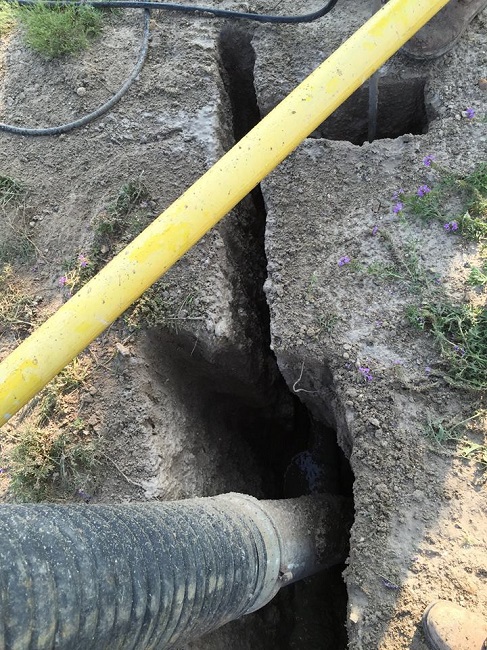Trenching safety should be a priority for any construction company or contractor. According to OSHA, trenching is among the most dangerous of all construction endeavors. OSHA can and does fine companies and contractors for ignoring the safety protocols for trenching. Worse, these protocols are readily available and very straightforward. The main theme in trenching safety is avoiding serious injury and the loss of life through common sense safety. Cave-ins occur suddenly and without warning, and are devastating. The sheer weight of the soil, dependent on a number of factors, is enough to cause numerous fatalities. Cutting corners will not only result in serious injury or death but also hefty fines from OSHA as well as civil lawsuits. For contractors, OSHA fines can be severe enough to close your doors. Thus, it pays to follow the rules and ensure that excavation practices are safe.
should be a priority for any construction company or contractor. According to OSHA, trenching is among the most dangerous of all construction endeavors. OSHA can and does fine companies and contractors for ignoring the safety protocols for trenching. Worse, these protocols are readily available and very straightforward. The main theme in trenching safety is avoiding serious injury and the loss of life through common sense safety. Cave-ins occur suddenly and without warning, and are devastating. The sheer weight of the soil, dependent on a number of factors, is enough to cause numerous fatalities. Cutting corners will not only result in serious injury or death but also hefty fines from OSHA as well as civil lawsuits. For contractors, OSHA fines can be severe enough to close your doors. Thus, it pays to follow the rules and ensure that excavation practices are safe.
Trenches of certain depths must have safety systems. The complexity of these systems depends entirely on a few different environmental factors. They include soil and rock stability, soil moisture levels, and forecasted weather changes of the area. These judgments need to be made by what OSHA terms a competent person, such as an engineer. A competent person will take the above factors into considerations when advising on safety systems. The inherent risk of trenching, including collapsing loads and falls (to add onto the environmental risks) means that inspections need to continue throughout the process. All workers should also be outfitted with fall protection gear. If a worker feels trench conditions are unsafe or that protocols have not been met, he or she should not enter the trench. When trenching, focus on safety and accident prevention. Be sure to prioritize OSHA regulations and utilize the knowledge of competent persons to set up a safe, secure work environment. To learn more about safe trenching, contact us today.
